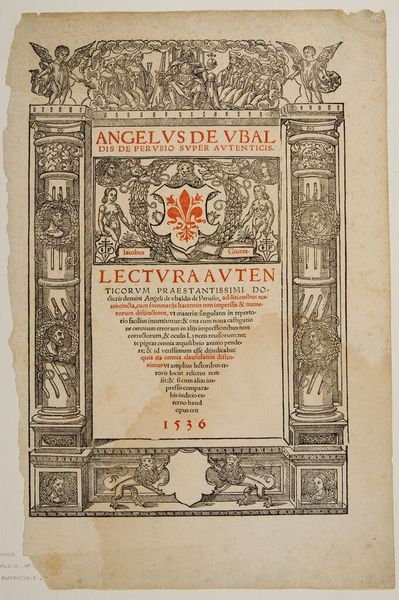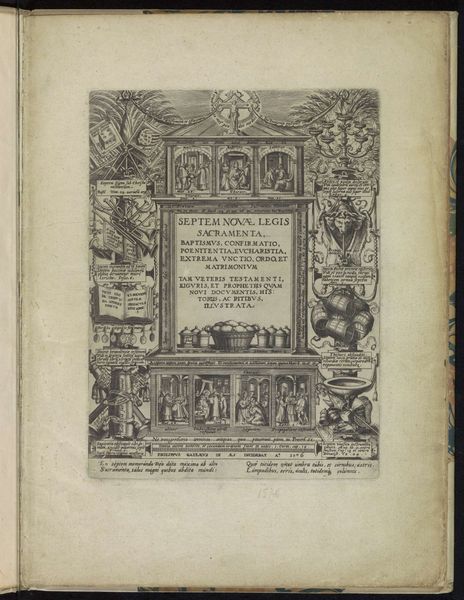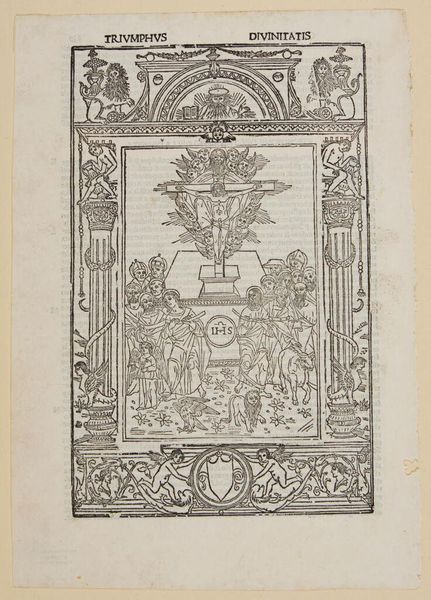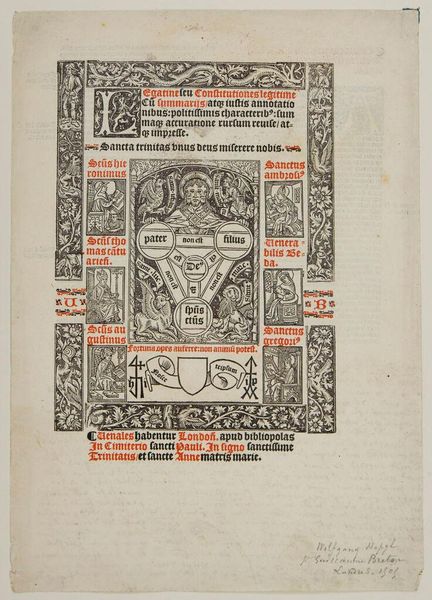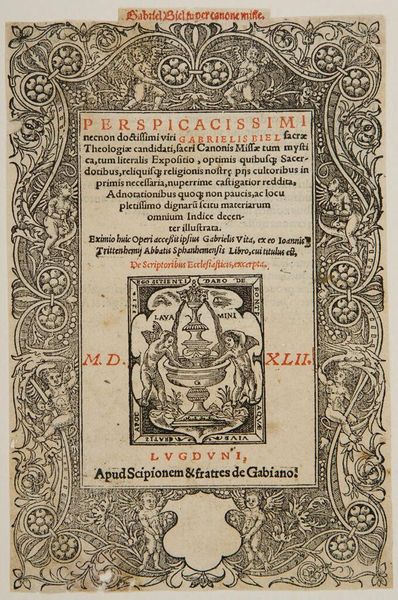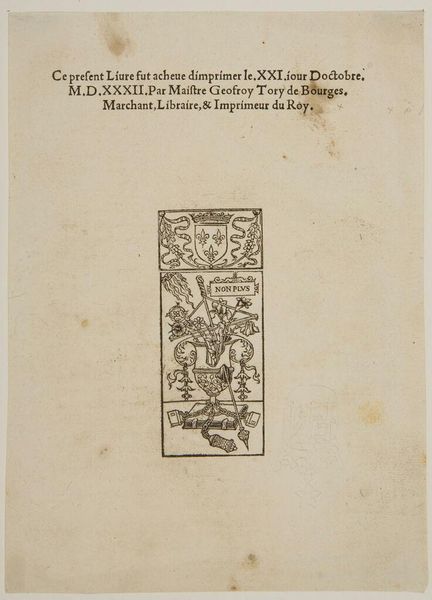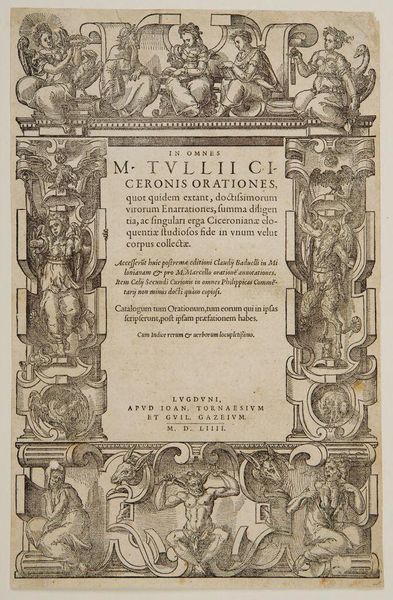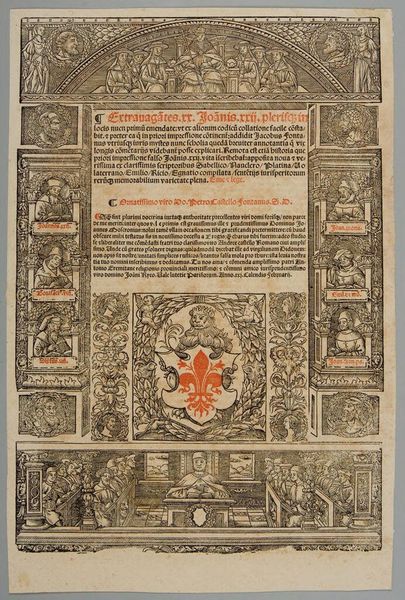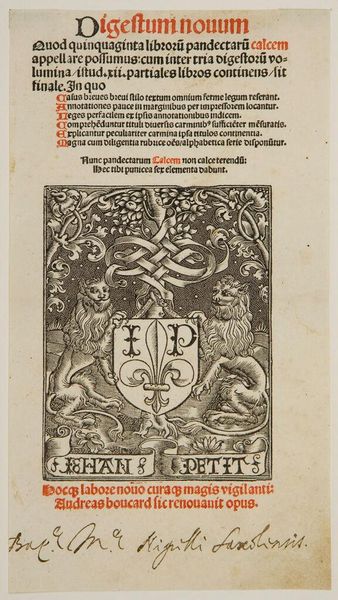
Copyright: CC0 1.0
Curator: Here we have a title page, "from Aymon Cravettae (of Savigliano), Consilia," a work from 1543 currently held in the Harvard Art Museums. Editor: It’s so busy, almost overwhelming. All these figures packed into an architectural frame—it feels like a stage set, but for a very serious drama. Curator: Indeed. The printer uses symbols of justice and figures of authority to convey credibility. Look at the portraits embedded within the architectural structure. They evoke a sense of history and lineage, emphasizing the weight of tradition. Editor: And the central image—is that meant to be Cravettae himself, dispensing wisdom? It's very staged, very consciously constructing a sense of importance and legitimacy around this legal text. The date, so prominently displayed, almost seems like a brand. Curator: It reinforces that sense of authority, situating the work within a specific moment in time and history. It’s an assertion of relevance. Editor: Looking closer, I think it's fascinating how they blended classical imagery with contemporary portraiture. It is a statement of power, both temporal and enduring. Curator: Agreed. It speaks volumes about how legal knowledge was being presented and consumed in the 16th century.
Comments
No comments
Be the first to comment and join the conversation on the ultimate creative platform.
